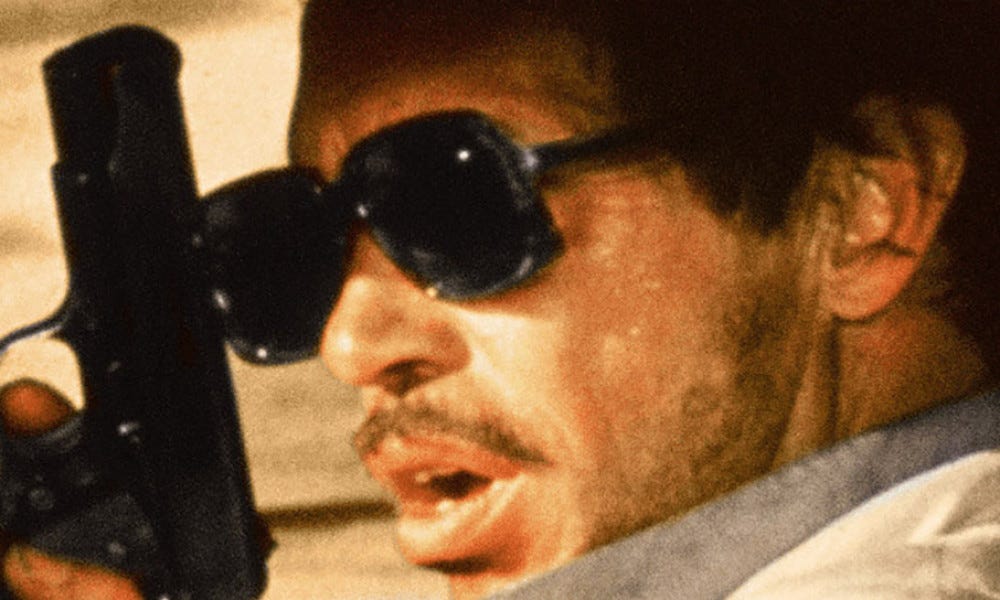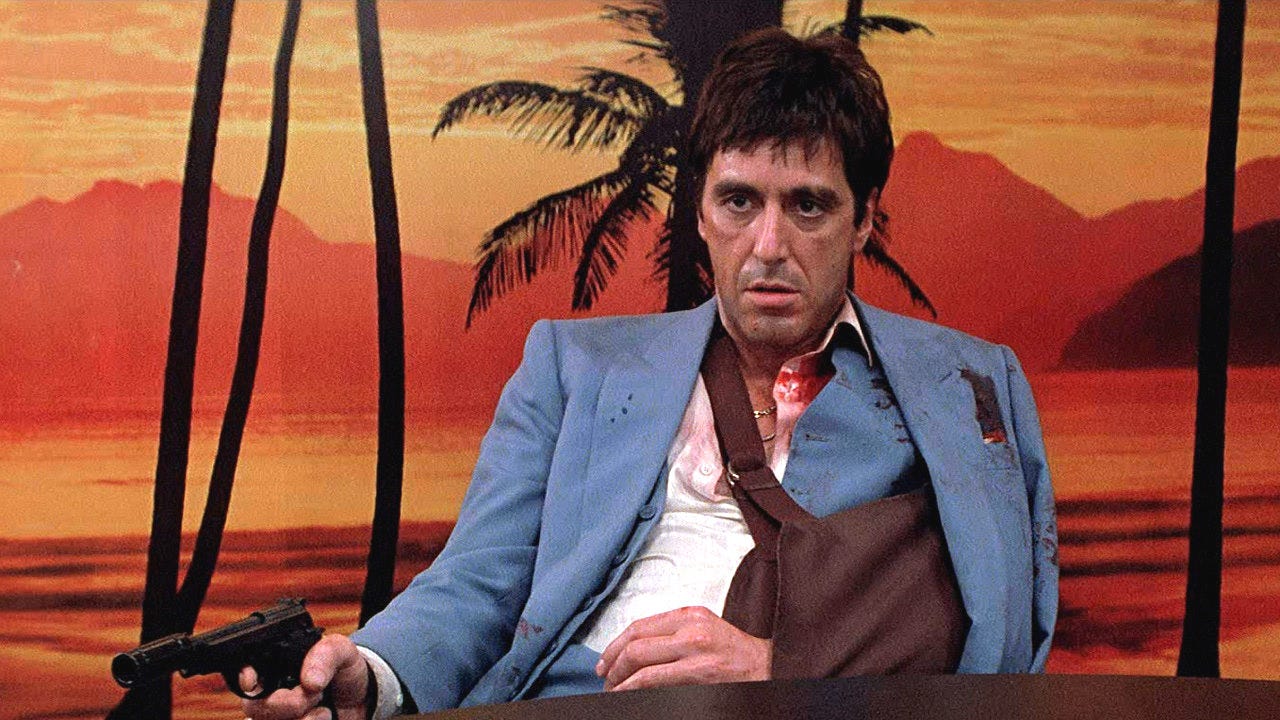In Bring Me the Head of Alfredo Garcia, Warren Oates plays a drunken piano player who gets wind of a one million dollar bounty on someone named Alfredo Garcia, who he is familiar with. He sets out with his girlfriend to claim the reward, but through one misadventure after another, his girlfriend is assaulted and killed and he kills dozens himself. He winds up with the rotting, decapitated head of Garcia, which he brings to the crime lord that put up reward, but winds up in a wild shootout where everyone dies.
Directed by Sam Peckinpah, who was himself in a state of constant inebriation throughout the shoot, Bring Me the Head of Alfredo Garcia is a boozy quest story where the protagonist doesn't seem to know what his motivation or end game is throughout. It is also a great example of the anti-hero protagonist.
The antihero is not driven by the higher purposes of the hero, such as: love, a sense of justice, the need to protect others, or even a dubious impulse like revenge. Even the Flawed Hero is still committed to pursuing justice, in spite of their shortcomings. But the antihero as protagonist moves through the story either as a hapless bumbler, a powerless victim, or a wretched conniver. They are the protagonist because they story happens to them, but they are often not the driver of events like most heroes are. They often lack the character or power to influence events but their choices – often selfish, wrong, or amoral - result in consequences that drives the story along.
In Alfredo Garcia, Oates initial motivation is simple: he needs the reward money for himself and his girlfriend. He's willing to sell out an acquaintance to get it, knowing it will probably mean their death. He's not an admirable character. But as the story progresses, one failure after another ruins his plans and he is dragged along by some vague notion of revenge mixed with a stubborn determination to deliver the head. The story stumbles forward to its bloody conclusion with no clear sense of closure or redemption.
I will admit Bring Me the Head of Alfredo Garcia is not for everyone, especially the parts where Oates is having conversations with the rotting head.
But readers and viewers can identify with antiheroes, in spite of their moral failings or inadequacies. It's precisely those flaws that we might see in ourselves, or at the very least, we can understand what it's like to be trapped by forces larger than our selves. And there is also the dark human response of schadenfreude: the pleasure that comes from witnessing the misfortunes of others.
The average crime fiction reader or viewer can easily wish they were a Traditional Hero like Sherlock Holmes or a Flawed Hero like Harry Bosch, but not many would wish to be Al Roberts, the protagonist of the great film noir Detour. Roberts is a third rate musician in love with a woman destined to rise above him who stumbles into a nightmarish scenario involving a dead bookie and one of the greatest, most evil femme fatales ever depicted. He makes a fatal error in adopting the identity of the bookie, runs afoul of Vera, who knows he's a fraud and blackmails him into a scheme to defraud the bookie's relatives. The move ends badly for both Al and Vera - as any good Noir should, with Al waiting for arrest, consigned to his doom.
There are anti-heroes that aren't losers. This version features a dynamic protagonist who is devoid of morality or other redeeming qualities, but who seizes control of the narrative with both hands. This is the most challenging character to write, because it's much harder to sympathize with monsters or sociopaths.
One way is to give the protagonist one redeeming moment. In Brian DePalma's Scarface (1983) Tony Montana is given the job of killing an activist that is threatening to expose his Colombian boss's drug operation. A bomb is planted in the activist's car, but when Tony sees the activist's young children enter the car, he aborts the job and kills the bomb operator. This seals his fate and he is marked for death. Tony is a ruthless killer, but even he has his moral limits.
Another way is to use a technique I call triangulation. When you have a potentially unlikable or amoral protagonist, you should insert an antagonist who is even worse. This way, the actions of your questionable anti-hero will look tame by comparison. In Reservoir Dogs, Mr. White, played by Harvey Keitel, and Mr. Pink, played by Steve Buscemi, are ruthless criminals who admit they will gun down anyone who gets in their way. Both coldbloodedly murder pursuing policemen. But Mr. Blonde, played by Michael Madsen, gleefully tortures a policeman for no real reason. The trio confront each other, with Keitel and Buscemi accusing Madsen of acting like a psychopath. They have a code, as brutal as it is, but Madsen does not.
But there are also plenty of unredeemable, evil protagonists who are beloved by audiences. Patrick Bateman, played by Christian Bale in American Psycho is a deranged yuppie serial killer in the 1980s. Mickey and Mallory, in Natural Born Killers, played by Woody Harrelson and Juliette Lewis, are also mass murderers who show no mercy to their victims. And in Born to Kill (discussed here) both main characters are ruthless sociopaths that battle each other throughout the movie, seeking to separate an innocent woman from her inheritance.
Let's face it, people do love to root for bad guys. That's why slasher movies and their villains have been so popular for decades. You could certainly try and write a story with an unredeemable protagonist, but I think it would be fraught with the danger of turning off your audience, not to mention the moral question of whether writers should promote and glamorize evil.
Personally, I prefer the humanity of the helpless or doomed anti-hero. That is much more interesting material for me as a writer. It also opens up the opportunity to build your story around themes of social criticism, like the evils of capitalism, or the corruption of the criminal justice system, or sexual dynamics. And if you want to experiment with styles or narrative structure, an anti-hero story is a fertile landscape for surrealism and transgressive art.
Plus, they’re just plain fun.







Cool read.
I would add that there is something of the trainwreck aspect of watching the antihero protagonist continue doing wrongheaded things, even when he's presented with opportunities to reverse bad decisions or step out of the path of self destruction they're going
Alfredo Garcia is a perfect example of such an antihero. Benny is somewhat motivated by a sense of a mission but his own demons get in the way of his focus to get it done.
Some people have speculated that is the closest Peckinpah had presented himself onscreen. A conflicted but talented man with no clear wants.